Written for an American Blog, to be part of a series on European Craftspeople.
Stephen Critchley was born in the Royal Free Hospital, Islington, London in 1965 and in 1968 his family moved to St. Luke's, an area on the border of The City of London. His family have been part of the City's history since at least 1330 when Roger de Mortimer the son of his 29 times Great grandfather was hanged at Tyburn after being held in the Tower of London, on a happier note his 19 & 17 times great grandfathers Geoffrey Boleyn & Thomas Kytson were masters of the Worshipful Company of Mercers in 1454 & 1534 respectively with Geoffrey going on to be Lord Mayor in 1457. His family have been freemen of many of the livery companies over the years, up to now when his father and uncle are both freemen through working for the Worshipful Company of Carpenters.
From 1946 to 1972 his grandfather George Critchley worked for the Ministry of works (later the Department of the Environment, then English Heritage) at the Tower of London, Stephen says it was visiting him at work and going for walks with him in the near deserted weekend street of the City that gave him an interest in architecture and sculpture.
He trained with Ashby and Horner who had their origins in 1690's Aldgate, a stones throw away from where, around 60 years later the Liberty Bell would be struck in 1752 at the Whitechapel bell foundry where they still produce and restore bells at their original premises to this day.
From top left to bottom right, St. Bartholomew the Great, Raglan Castle, Heythrop House, Lancing College chapel
While with Ashby and Horner he was involved in the working of the new Seven Dial's Monument, Covent Garden. Upon finishing his apprenticeship and becoming a journeyman, Stephen cut his teeth on the restoration of Somerset House designed by William Chambers; St Paul's Church, Covent Garden and The Queen's House, Greenwich designed by Inigo Jones; St. Martin's in the Field's designed by James Gibbs and The Egyptian Avenue, Highgate Cemetery. As he gained experience he had the opportunity to work on the Sultan of Brunei's Palace in Knightsbridge; Grand Buildings, Trafalgar Square; The Savoy Hotel, The Strand; The Canadian Pacific Building, Cockspur Street and The Aga Khan's Palace at Newmarket overlooking the gallops.
In the early 1990's he had advanced to foreman for J.Bysouth at Woburn Abbey and was in charge of the dismantling and rebuilding of Chambers Bridge and while working on the South Stable Block he was involved in the Consolidation of Clunch trials carried out by John Ashurst and published in the Practical Building Conservation, English Heritage Technical Handbook Volume 1 Stone Masonry.
Chambers Bridge, Woburn Abbey
As Master Mason he ran projects in and around Gloucestershire and Oxfordshire including Heythrop House, Wheatley Park, The YMCA Cheltenham , Painswick House and a variety of Regency Houses in Cheltenham and Bath.
While working at Stoneleigh Abbey in 1999 he supervised the masonry and conservation packages of both phase I and phase II to their successful completion. The work consisted of the conservation and restoration of the 14th century Gate House, Garden Balustrade, Charlesworthy Bridge and Victorian conservatory. Different degrees of intervention were used for each of the works packages, recognising the individual historic properties of each structure.
13th Century Gtaehouse, Stoneleigh Abbey
Whilst working for a number of specialist conservation companies as a freelance Master Mason and contracts manager in the early 2000's, he ran projects such as the Conservation of the Peers Cloakroom and Westminster Hall at The Palace of Westminster, Windsor Castle, Lancing College Chapel and worked on the Great Court project at The British Museum.
Bertholey House was built by George Maddox a pupil of John Soane. In the early 1900's it was razed to the ground over a family dispute and stood completely ruined and with no front elevation until 2000. Stephen was asked to form and lead a small team of craftsmen and with only two drawings and a few very early photographs rebuild it to its former glory. To comply with the clients wishes all replacement stone was worked on site, including the entire front elevation cornice, portico columns and Ionic capitals.
Bertholey House before and after
For the majority of his career Stephen has carried out specialist projects or produced particular pieces for larger contracts. Over a 32 year career he has worked on many projects 85 of which he considers notable.
96-8 - Roman Paving of Colonia Nervia Glevensium, Friends Meeting House, Gloucester
700 - Evesham Abbey, Warwickshire
1097 - Westminster Hall, London SW1
1100's - Windsor Castle, Berkshire
1123 - St. Bartholomew the Great, London
1340 - St John the Baptist Church, Kingscote, Gloucestershire
1346 - Stoneleigh Abbey Gate House, Warwickshire
1360 - St Mary the Virgin Hawkesbury Upton, Gloucestershire
1377- St Clements church, Hastings, Sussex
1400's - Raglan Castle, Monmouthshire
1440's - Sudeley Castle, Gloucestershire
1610's - Audley End House, Essex
1616 - Dulwich burial ground, London
1617 - Queen's House, Greenwich, Inigo Jones
1626 - York watergate, London, WC2, Sir Balthasar Gerbier
1633 - St Paul's Covent Garden, London, WC2, Inigo Jones
1670 - St Edmund, King and Martyr, City of London, Christopher Wren
1677 - St Peter upon Cornhill, City of London, Christopher Wren
1690 - Heythrop Foley, Oxfordshire
1700's - Stoneleigh balustrade, Warwickshire
1706 - Heythrop Park, Oxfordshire,Thomas Archer
1712 - Royal Naval Hospital, Greenwich, Christopher Wren & Nicholas Hawkesmoor
1716 – St. Mary Woolnoth, Nicholas Hawksmoor
1726 - St Martins in The fields,St. Martin's Lane, London WC2, James Gibbs
1730's - Painswick House, Gloucestershire
1730's - Southam Manor, Gloucestershire
1733 – St. Luke's Church, London, EC1, John James & Nicholas Hawksmoor
1744 - Woburn Abbey, Bedfordshire, Henry Flitcroft & Henry Holland
1750 - Woburn Abbey South Stable Block, Bedfordshire, Henry Flitcroft,
1750's – South Audley Street, london, W1
1770 - Stoneleigh Abbey Conservatory, Warwickshire
1790's - Prestbury Table Top Tombs, Gloucestershire
1804 - Russell Square, London, WC2
1813 - Tobacco Dock, London, E1
1814 - Charlesworthy Bridge, John Rennie
1815 - Wheatley Park School, Oxfordshire
1819 - Somerset House, William Chambers
1820's - Chambers Bridge, William Chambers
1824 - YMCA, Cheltenham;
1830 - St. Philips and St. James’s parish Church, Cheltenham
1836 - Pittville Lawn, Cheltenham
1839 - Highgate Cemetery chapel and Egyptian Avenue, London, N6
1840 - Bertholey House, Llantrisant, South Wales,George Maddox pupil of Soane
1840 - Nelson Museum, Monmouth, South Wales
1840's – Dover light house, Kent
1844 - Usk Prison, South Wales
1847- Palace of Westminster, Piers Cloak room, Charles Barry & Augustus Pugin
1850 - Suffolk Square, Cheltenham, Gloucestershire
1855 - Public Records Office, Sir James Pennethorne
1862 - Cornhall, Cirencester
1865 - Old Lloyds Building, Billiter Street, London
1879 - Bristol Grammar School, Bristol
1887 - All Saints Church, Gloucester, George Gilbert Scott
1889 - Savoy Hotel, London
1894 - Sir Francis of Assisi, Wormwood Scrubs, Anglican Chapel, London W12
1895 - King Edward's Buildings, St. Martin Le Grand , London, EC2, Sir Henry Tanner
1900 - Empire Hotel, Bath
1909 - Victoria & Albert museum , Aston Webb
1909 - Selfridges store, Oxford Street, London, W1
1910 - Durban City Hall, South Africa,
1911 - Whiteleys store, John Belcher & John James Joass
1911 - Lancing College chapel, R H Carpenter & William Slater
1920's - Prestbury Campanile, Gloucestershire
1920's - Lewisham War Grave
1920's - Kensal Green War Grave
1920's - Coleford War Memorial, Gloucestershire
1925 - Adelaide House, London Bridge, EC4;
1936 - Church House, Westminster, SW1, Sir Herbert Baker & A T Scott
1948 - Polish War Memorial, Northolt
1953 - Runnymede Memorial
1960 - Carlton Towers Hotel, Sloane Street, London;
1987 - Garden House, Henley upon Thames
1987 - Rutland Gate, Kensington
1987 - Royal Court, Sloane Street
1988 - Richmond House, Whitehall, London, SW1
1988 - Carnaby Street, Roof Garden;
1989 - Seven Dials monument, London, WC2
1989 - Grand Buildings, Trafalgar Square
1991 - Elle, Wigmore Street
1992 - Aga Khans Palace, Newmarket;
1996 - Garden House, Henley Upon Thames;
Years of working so closely with such high quality design and craftsmanship has lead to Stephen gaining a deep understanding of the design of this period and he is now one of very few craftsmen worldwide who still works with the techniques and visual proportions used at the time, many of which, closely linked in the Baroque with the explosion of baroque music through harmonicproportion.
Over the past 10 years Stephen has worked at the head of a select team of craftspeople hand carving marble and stone fire surround, ornament and statuary for high end design and heritage projects. Although his team work with all design and architectural periods his own speciality is the carving from English Palladianism through Baroque to Neoclassicism. He supplies items worldwide to dealers, architects, designers, developers, galleries and the public, with his main markets outside the UK being the USA and Asia.
Selection of carved pieces from our workshop
Stephen travels to continental Europe several times a year to choose his own marble direct from quarries in Italy, France and Spain so as to get the best quality and freshest marbles. Marble when first quarried is full of moisture drawn directly from the bed rock known as quarry sap, as this moisture dries the marble becomes harder and more brittle and less receptive to intricate carving.

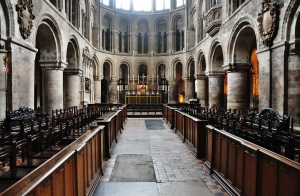
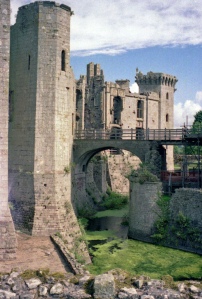
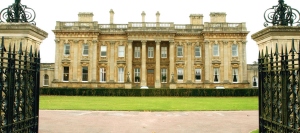
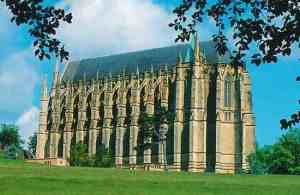



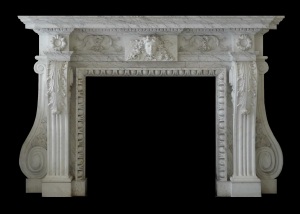
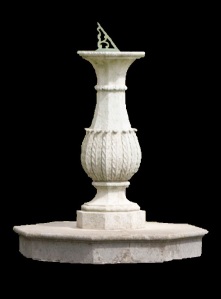
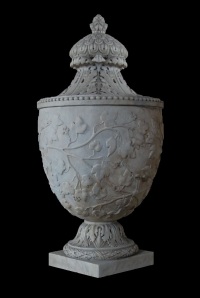
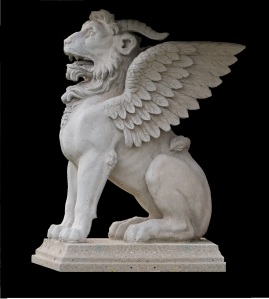
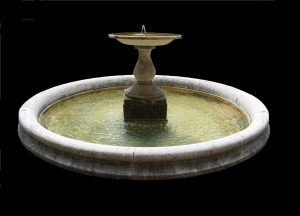
No comments:
Post a Comment